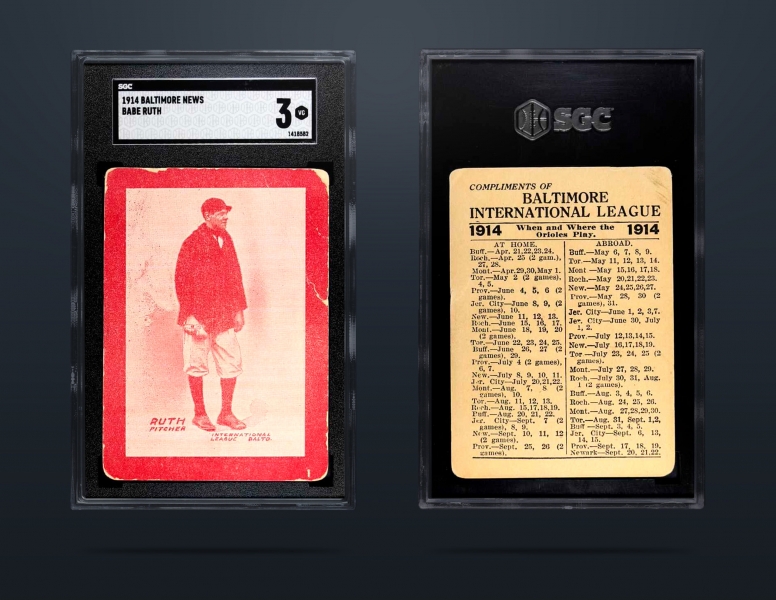1914 Baltimore News Ruth Sold for Record Price; Will Hit Fractional Shares Market

One of about ten known copies of Babe Ruth’s first baseball card—issued when he was still a minor leaguer—has just become the most expensive baseball card ever sold, but this time collectors and fans will have a chance to buy in and hold a very small ownership stake.
Fractional shares platform Collectable announced the sale of a 1914 Baltimore News card Wednesday morning.
The card has been on display at the Babe Ruth Birthplace and Museum in Baltimore for over 20 years. It changed hands through a private transaction between two collectors this spring. The exact sum wasn’t released due to a non-disclosure agreement, but Ezra Levine, the CEO of Collectable, put the price at “well over $5.2 million.” That figure would surpass a 1952 Topps Mickey Mantle PSA 9 and a high-grade 2003-04 Upper Deck Exquisite LeBron James rookie parallel card, each of which were sold for about that number in recent months.
Collectable has put valuation of just over $6 million on the card and says the unnamed new owner agreed to offer shares of the card to the public through Collectable at $3 per share—the number Ruth wore during his days with the Yankees. It’s the first time that an item considered the most valuable sports collectible will be offered on a fractional shares platform where anyone can become part owner. Levine called it a “seismic moment for the sports collectibles industry.”

“We’ll be selling a very small minority amount, probably anywhere from one to two percent of the card on IPO through Collectable,” Levine told SC Daily. “I would not be surprised if we do additional sales of shares of the card over time.”
One percent of the card would amount to about 20,000 shares being available at $3 each for a total public investment of $60,000.
Levine says the card has to be examined by the Securities and Exchange Commission before shares can be sold, a process he expects to conclude “over the next month or two.”
The card had never been graded until last month, when it was delivered to SGC’s Florida offices where it was evaluated and received a 3 (Very Good). It’s now one of two cards in SGC 3 holders, the other having last sold in 2008 through Robert Edward Auctions for $517,000. Prices for rare sports cards have skyrocketed since then, however, and copies of Ruth’s Baltimore News card rarely come up for sale. The last one offered at auction was a PSA 1 example that netted $450,300 in 2013.
An argument could be made that it’s this card—not the T206 Honus Wagner—that should be considered the holy grail of baseball cards. For context, there are approximately 60 T206 Honus Wagner cards in circulation including three that have been available to purchase publicly this year. The Baltimore News Ruth is about six times as rare and features the game’s most famous icon. Ruth’s Major League rookie cards were printed in 1916, and while highly coveted and valuable, are far more plentiful than this 1914 Minor League version.
The newly graded card went back on display Wednesday and will stay there—at least for a while, according to Levine.
“We’d rather keep it at the Babe Ruth Museum where people can go and see it and experience it versus keeping it in a vault.”

“This incredibly generous offer to exhibit Ruth’s 1914 Orioles’ rookie card enables the museum to offer visitors the unique opportunity to experience -up close and personal- the Mona Lisa of baseball cards,” stated Shawn Herne, Executive Director of the Babe Ruth Museum.
Levine says there were no stipulations on the deal, though, meaning if a much higher offer was made for the card in the future, there’s a chance it could be sold to a new owner.
Distributed in a small georgraphic area in and around the city, the 1914 Baltimore News set featured members of the city’s International League and Federal League teams and had schedules for home and road games on the back. The cards were printed with both red and blue borders. The checklist of known players expanded by one last year with the discovery of a Dave Danforth card, but a total of no more than about 75 surviving cards is known to exist.
Collectable offered an interview with the anonymous buyer (digitally altered voice and all):





